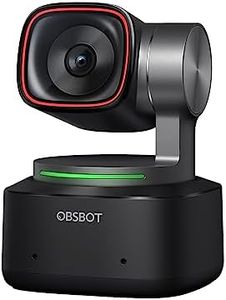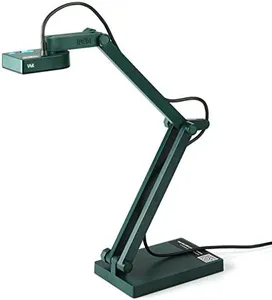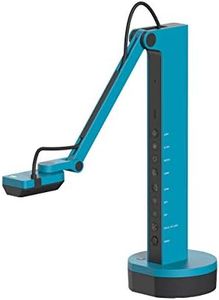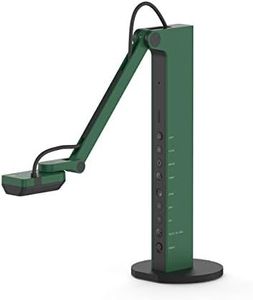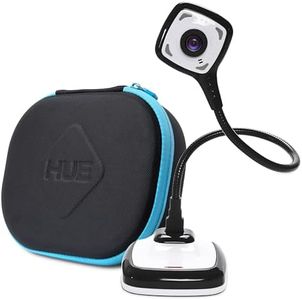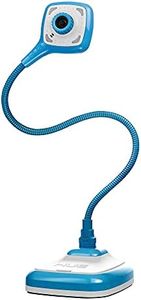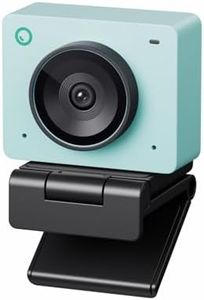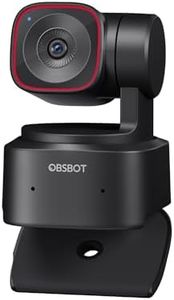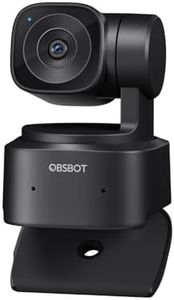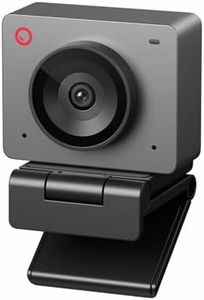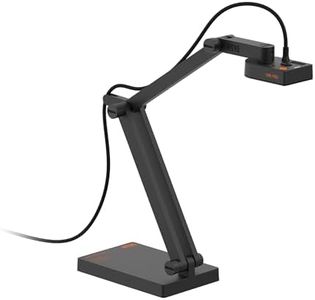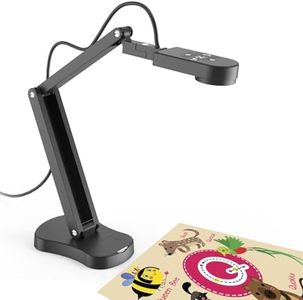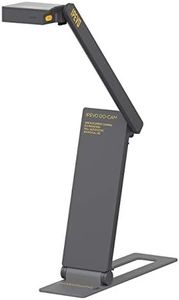We Use CookiesWe use cookies to enhance the security, performance,
functionality and for analytical and promotional activities. By continuing to browse this site you
are agreeing to our privacy policy
10 Best Document Cameras
From leading brands and best sellers available on the web.By clicking on a link to a third party's website, log data is shared with that third party.
Buying Guide for the Best Document Cameras
Choosing the right document camera is all about matching the device to your needs, whether for teaching, office presentations, or archive work. Document cameras project or digitize physical documents, books, or small objects, making them ideal for demonstrations or sharing content in real time. Understanding key specifications will help you navigate the many available models and select the best one for your purposes.ResolutionResolution refers to the clarity and detail a document camera can capture, typically measured in megapixels or lines. Higher resolution means better image quality, which is especially important for showing fine print or detailed illustrations. Entry-level document cameras often offer lower resolution and are suitable for displaying basic text or simple graphics, while mid-range and high-resolution models deliver crisp images ideal for detailed textbooks, diagrams, or archival materials. Consider how detailed your demonstrations need to be; the more detail you need to show, the higher resolution you should look for.
Zoom CapabilityZoom capability determines how closely you can focus on the material being displayed. Optical zoom uses the camera lens for close-ups without losing quality, while digital zoom enlarges the image electronically, sometimes causing blurriness. Limited or no zoom works for regular-sized documents, while optical zoom is important for examining books, artwork, or small objects in detail. Choose a camera with enough optical zoom if you need to highlight small sections or showcase intricate details.
Frame RateFrame rate, measured in frames per second (fps), affects how smoothly motion appears when moving or repositioning documents under the camera. Low frame rates can make movements look choppy, which can be distracting during live presentations or demonstrations. Standard frame rates (around 15-20 fps) work for static documents, but if you anticipate moving items or writing live, look for higher frame rates (25-30 fps) to ensure smooth, fluid display.
ConnectivityConnectivity options determine how the camera links to your display or computer setup. Common options include USB, HDMI, and VGA outputs, as well as wireless connectivity on some models. Basic USB-only models are best for single-computer use, while HDMI or VGA ports work well for direct projector or display connections. If you need flexibility to present in various setups or connect to different devices, choose a camera with multiple outputs or wireless features for convenience.
LightingBuilt-in lighting helps ensure documents are well-illuminated, especially in dim rooms or when capturing glossy pages that may reflect ceiling lights. Simple built-in LED lights are often sufficient for most users, while adjustable or multiple light sources help reduce glare and shadows for archival work or objects with uneven surfaces. If you expect to use your document camera in various lighting conditions, prioritize models with versatile or adjustable lighting options.
Document Size CapacityThis spec indicates how large a document or object you can fit within the camera’s viewing area. Basic models handle typical letter or A4-size pages, while larger or adjustable platforms can accommodate oversized books, blueprints, or 3D objects. Think about what you’ll be showing most often—if you mainly work with standard paperwork, a smaller platform works fine, but for larger items, ensure your camera can capture the entire area without cropping.
Portability and SetupPortability refers to how easy it is to carry and set up your document camera. Lightweight, foldable designs are great for people who need to move between classrooms or offices, whereas sturdier, fixed models might be better for permanent setups. If you expect to transport the camera frequently, look for a compact, easy-to-install model; if it will stay in one spot, stability and a larger base may be more important.
